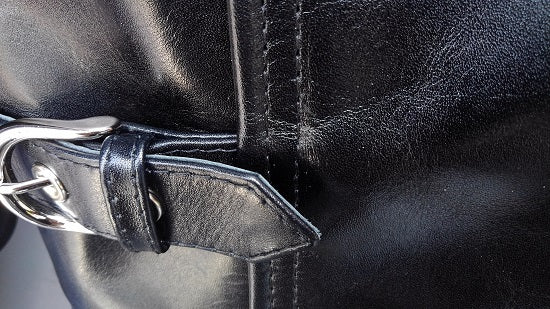
SLIT & HOLE
It's a long time ago, but when I bought my first pair of leather pants when I was young...
When I told the store clerk that I wanted to make the hem shorter, he said, ``It's leather, so you can just cut it yourself.''
I see! ? If it was leather, it wouldn't fray, so when I got home, I used scissors to rip it up.
However, regular scissors didn't cut it well and the cross section was shaky. The threads start to fray...
I see! I didn't do it well...or rather, I lacked imagination.
Nowadays, it is a daily routine for me to shorten the length of the pants that come to our main factory, and we also treat them with threads to prevent them from fraying, so the cross section never becomes loose.
At that time, how do you finish it? Should I fold it back and stitch it? Leave it cut? Exchanges like this are commonplace.
By the way, this term ``uncut'' is often used not only when hemming, but also in the production of leather wear.
The main advantage of this specification is that it reduces thickness.
Belt lining leather

inside pocket

buttonhole etc.


By the way, a friend of mine once told me that he thought it was a design when he saw the holes at both ends of the notch.
It certainly looks pretty, but the purpose of rounding the tip is to make it harder to tear the leather.
``Leave it cut'' and ``Drill holes only'' It may sound bad, but this is one of the simple manufacturing methods that takes advantage of the characteristics of leather that cannot be done with fabric.